Member Case Studies

Hydro-demolition help for port upgrade
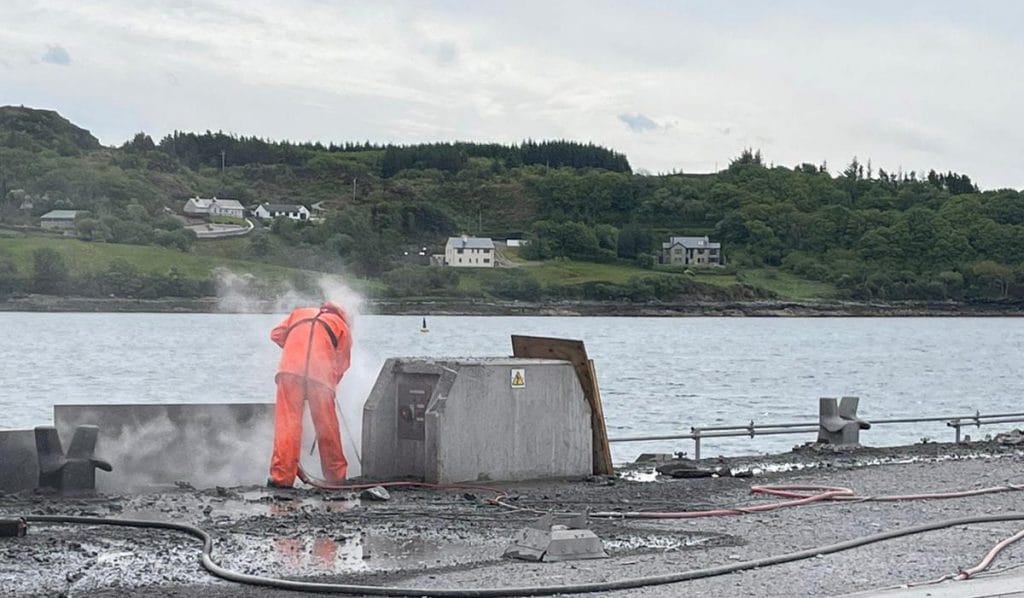
Killybegs Harbour Centre, in County Donegal, is the newest, sheltered, deep-water port on the west coast of Ireland. It is a major fishing harbour and has plans to develop as a major commercial cargo port.
As part of this strategy, a €30million improvement programme is underway, funded largely by the Irish government, which includes construction of a new 120-metre harbour wall.
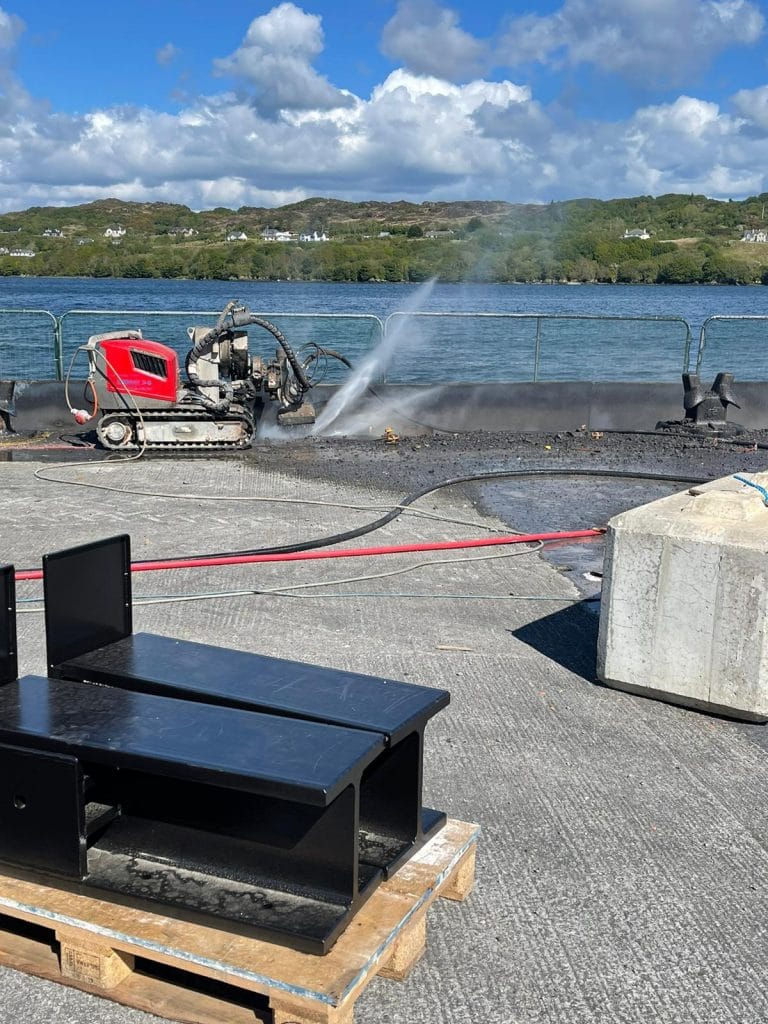
This resulted in a civil engineering contractor commissioning UK-based water jetting contractor Hydroblast, a member of the Water Jetting Association, to carry out hydrodemolition on a pier wall.
The project involved upgrading temporary modifications, made in 2016 and 2018, by replacing five wooden piles with 10 new steel piles and the creation of a new permanent concrete pier edge.
Water jet advantage
Civil engineers working on the project quickly concluded hydrodemolition was the only viable method for carrying out the demolition work needed.
Removing unwanted concrete mechanically, for example with jack hammers, could have caused vibration damage to parts of the slab that needed to be retained.
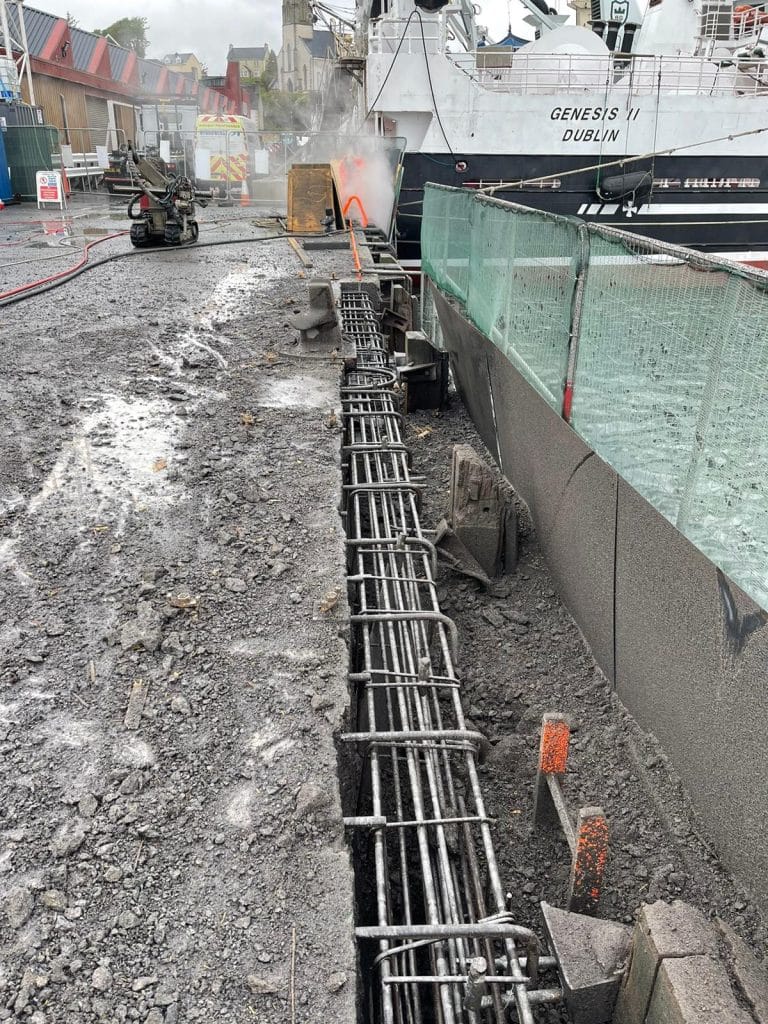
Wire cutting would have damaged steel rebar which, again, had to be retained in the new structure.
Using hydrodemolition overcame these risks. It does not cause vibration damage to surrounding concrete structures, or underlying steel reinforcement.
Secondly, it allowed precise removal of the minimum amount of concrete. This controlled costs and enhanced sustainability, creating the smallest possible carbon footprint.
Thirdly, with all appropriate controls in place, hydrodemolition was safer because hand-arm vibration and dust inhalation risks were minimised.
Speed and safety
The objective was to replace the pier edge with C40/50 concrete. This required the removal of a 30m-long strip of concrete which was 450mm wide to a minimum thickness of 450mm.
This would result in just over 6m3 of concrete being removed.
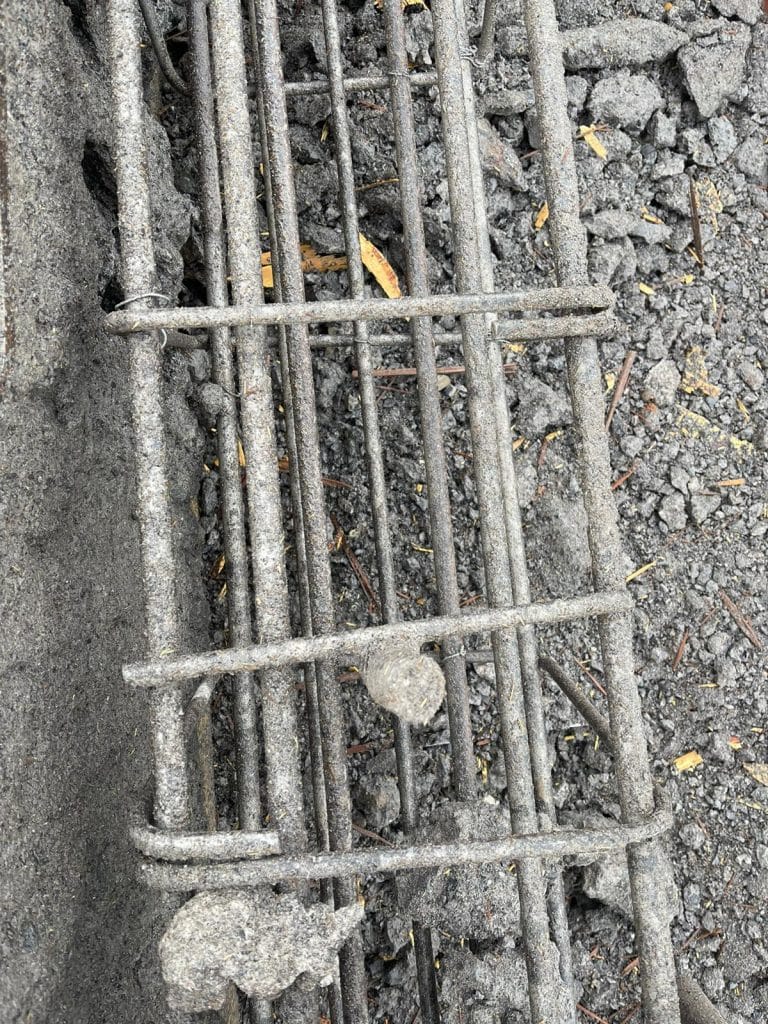
Hydroblast deployed a three-person team to carry out the work. Most of the concrete was removed using an Aqua Cutter 410A hydrodemolition robot. This delivered additional operational and safety advantages.
The robot allows concrete to be removed more quickly. The operator can also control the robot remotely, while stand away from the water jet.
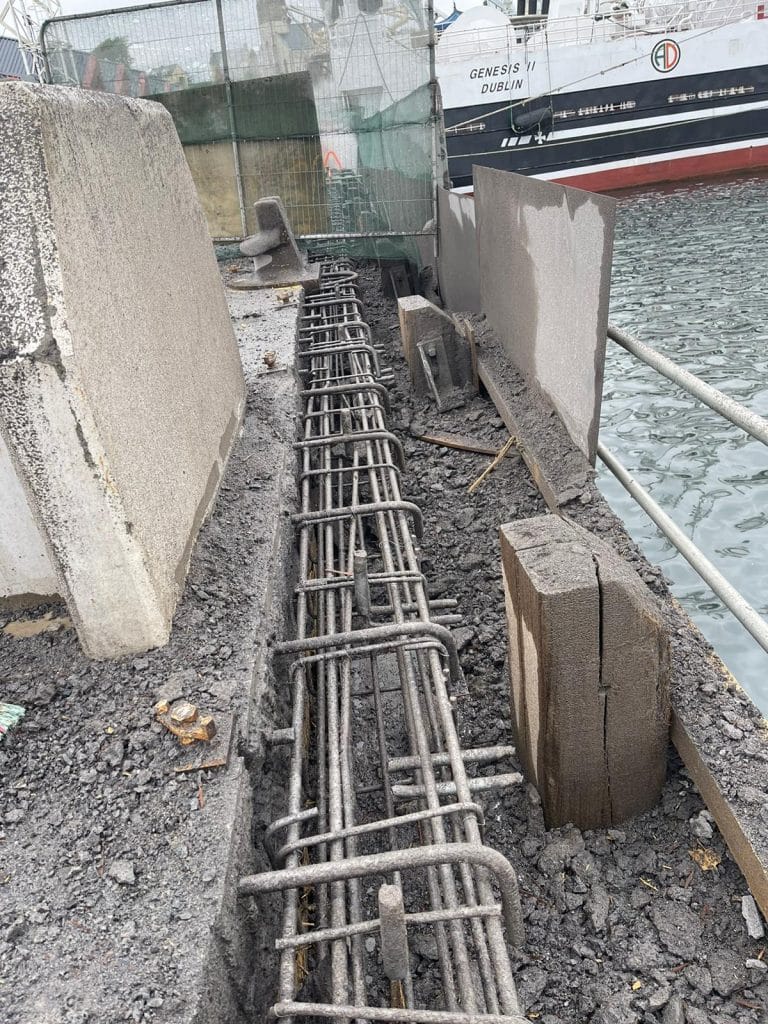
For this project, the robot was operated at 2200 bar (32,000 psi) with a water flow rate of 122 litres per minute. A hand-held jetting lance was also used to trim a small edge.
Hydroblast’s client put in place a system for containing and disposing of the used jetting water and concrete waste. This involved the installation of a scaffold crash platform along the pier edge, which was also used by other contractors.
Hydroblast’s operatives wore life jackets as part of a detailed RAMS agreed with the client.
The hydro-demolition project, carried out in May 2021, was completed in three days, including site set-up and take-down time – reflecting the speed with which such work can be carried out.
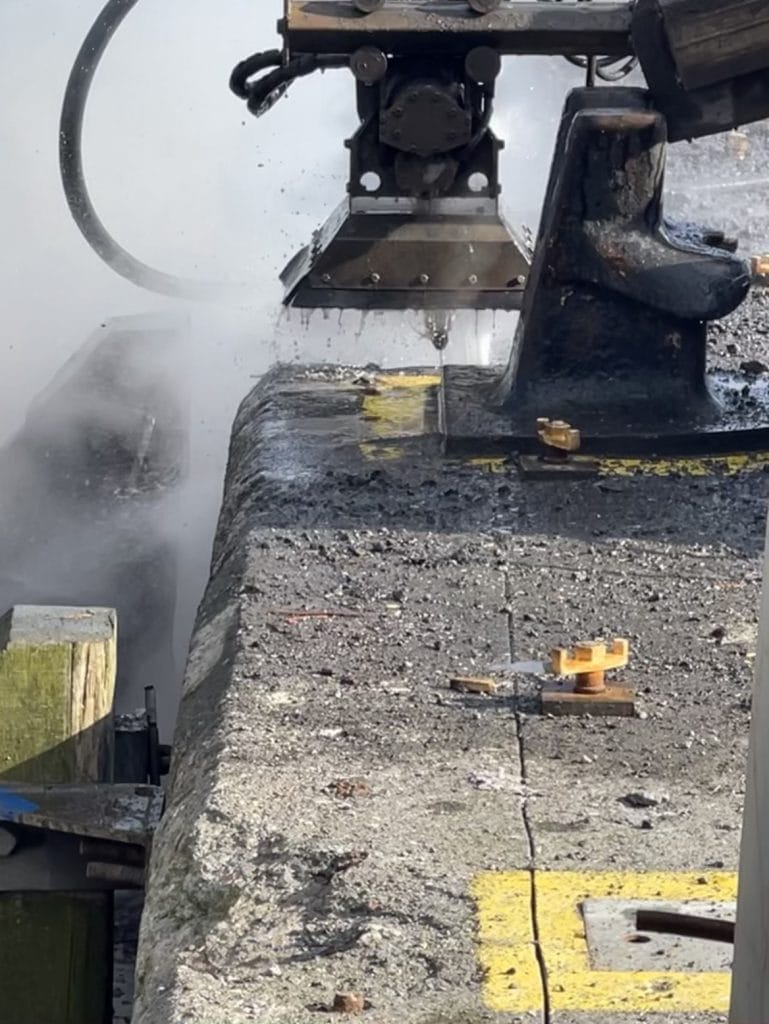
There was also two days of travel time to and from the site, in three vehicles, including the 32-tonne rigid HGV that contained Hydroblast’s water jetting pump in a 23ft steel container.
Brexit and COVID
Two of the biggest challenges associated with the project had nothing to do with hydro-demolition.
Meeting the requirements of new travel and vehicle movement regulations imposed by Brexit, especially due the timing of the project, required significant effort.
Hydroblast also ensured it maintained a COVID-secure operation while meeting all additional health and safety regulations and lockdown measures required by both the British and Irish governments.
Hydro success
The client was impressed with the success of the hydro-demolition project, and Hydroblast’s ability to overcome regulatory hurdles while also fitting in with its own detailed and often changing work schedules.
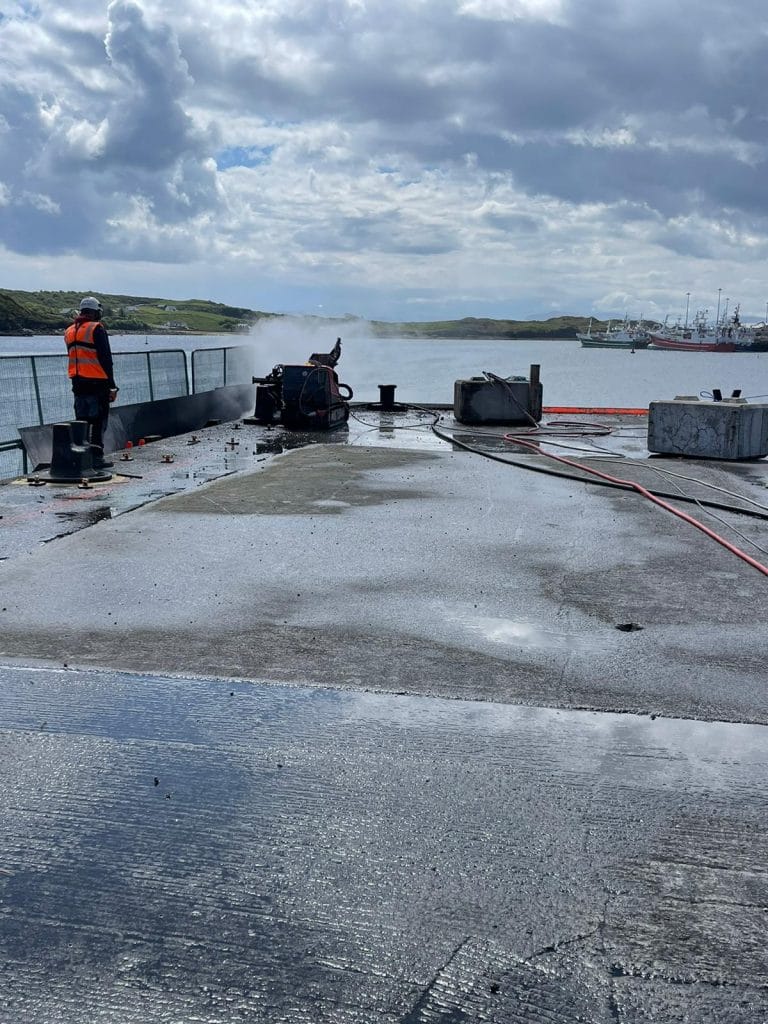
This was the second hydro-demolition project carried out by Hydroblast in Ireland in recent years, demonstrating the operational, safety and sustainability advantages of the process.
Positive feedback
In formal feedback to Hydroblast following the Killybegs project, the client praised the WJA member for its team’s “excellent” attitude to health and safety and the work ethic and positive attitude of its team.
The client also commented on the work being completed a day ahead of schedule, greatly helping their own programme management, and the quality and condition of the equipment Hydroblast used.